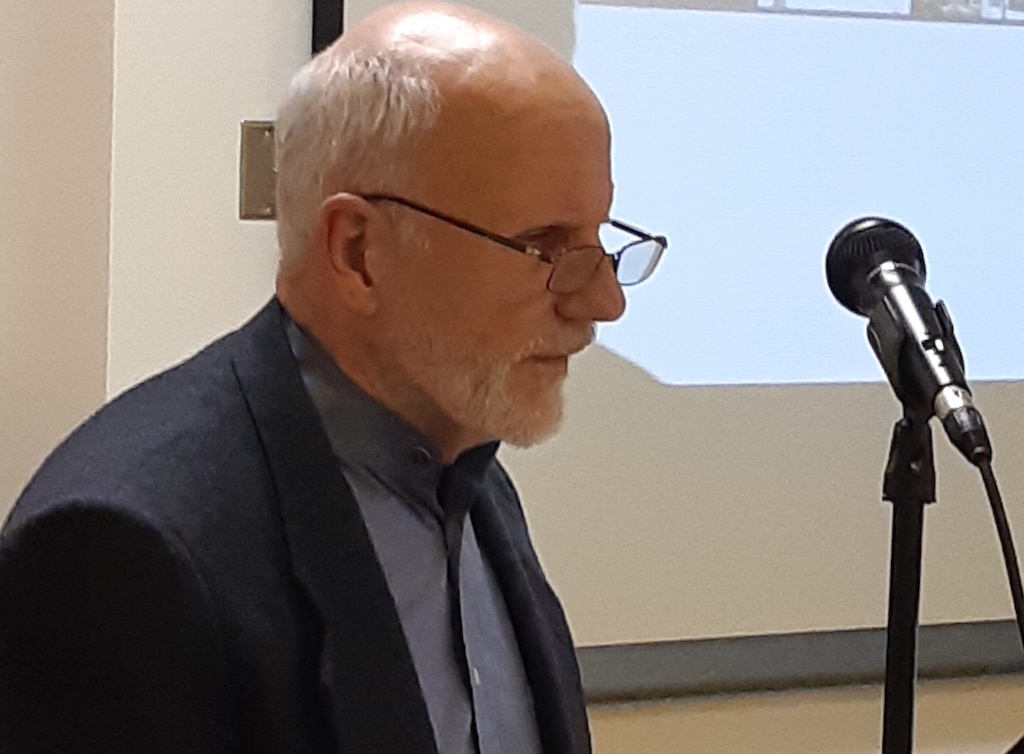Respected Canadian activist and writer Tony Clarke has just published a book called Getting to Zero: Canada Confronts Global Warming. Clarke is the founder and director of the Ottawa-based Polaris Institute and he has a wide experience in working in Canada and internationally on trade and environmental issues. The release of his book is timely because hundreds of policy-makers, goaded by civil society activists, are meeting at the World Climate Summit in Katowice, Poland, to wrestle with how to mitigate global warming. As the title of Clarke’s book suggests, that destination is to have net carbon emissions of zero by 2050 if we are to avert global catastrophe in the form of species extinction, extreme storms, floods, droughts, wild fires and more.
The big shift
Clarke’s research arises from his organization’s participation in the Green Economy Network, a coalition of labour unions, environmental and social justice groups. Their focus is upon policies that would create a “big shift” — away from an economy based on fossil fuels toward a clean energy future.
The summit in Katowice will review progress, or more likely the lack of it, since a similar international meeting in Paris in 2015. There, participating countries pledged to take action to hold the increase in the global average temperature to below 2.0 degrees Celsius above pre-industrial levels, and further, to try to limit that increase to 1.5 degrees.
At first glance these numbers appear to be small. But at Paris, representatives of low-lying nations in danger of being swamped by rising sea levels used the slogan “1.5 to stay alive.” Estimates are, however, that the pledges made by nations at Paris, even if they are kept, would allow temperatures to rise by as much as 3.5 degrees. It is also worth noting that the Paris conference provided for no international mechanism to enforce any of the pledges made.
Alarming reports
Clarke’s book is timely for other related reasons as well. In November, a major scientific report released by 13 federal agencies in the U.S. predicted dire consequences for that country if significant steps are not taken to mitigate global warming. The Trump administration attempted to bury the climate report from its own agencies by releasing it on the day after American Thanksgiving.
That report arrived about six weeks after another in October from the Intergovernmental Panel on Climate Change (IPCC), a group of the world’s best climate scientists. They are mandated by the United Nations to monitor what is happening in an effort to help in guiding government policymakers, and their most recent report was prepared to inform the summit in Katowice.
The IPCC’s reports over a period of years have become increasingly urgent in tone. In this last one, they warned that limiting global warming to even 1.5 degrees “would require rapid, far-reaching and unprecedented changes in all aspects of society.” Described in another way, to keep warming under 1.5 degrees, global carbon dioxide emissions would have to fall by 45 per cent by 2030 and to reach a net of zero by 2050.
It is just this figure — a net of zero — which Clarke deals with in his book. Canadian governments have been kicking the can down the road ever since Jean Chretien’s blithe and soon-to-be-broken promise in the Kyoto Protocol in 1997. The current Trudeau government has promised to reduce greenhouse gas emissions by 30 per cent between 2020 and 2030 but has no credible plan to meet that target, as the federal Environment Commissioner reported in 2017.
Ottawa’s flawed plan
The centerpiece of the federal government’s plan is to introduce a levy, or tax, on gasoline and other carbon products in order to encourage conservation and the development of energy alternatives. Ottawa is pairing its carbon levy with support for additional pipelines to move bitumen from Alberta’s tar sands to port in British Columbia and elsewhere. In his book, Clarke says such a pairing is a false equation, and that Canada cannot begin to move to net zero carbon, or even to meet its Paris commitments, if pipelines continue to be built.
Public investments
Clarke’s path to net zero emissions by 2050 is mainly focused upon three pillars: investing in clean renewable energy such as solar, wind and geo-thermal power; investing in the energy efficiency of Canada’s building stock — residential, commercial and public; investing to improve public transit in cities and high-speed rail transport for longer distances.
Clarke says public investments of $81 billion over a five-year period would create more than a million “climate jobs” and reduce Canada’s greenhouse gas emission by one-third. The plan would be accompanied by a “just transition” and training programs for workers whose industries are affected, coal mining to take one example.
On first glance this appears to be an unusually large public investment and the government would likely balk at it. But Clarke says that Canadian governments already provide direct and indirect subsidies of $46 billion a year to fossil fuel industries. Better to invest public money in green and sustainable technology rather than prolonging the use of fossil fuels whose use must be curbed, and quickly.
Dennis Gruending is an Ottawa-based author, blogger and a former member of Parliament. He has worked as a print and television journalist and a CBC Radio host. This post appeared on Dennis Gruending’s Pulpit and Politics blog.
Photo by Dennis Gruending.
Help make rabble sustainable. Please consider supporting our work with a monthly donation. Support rabble.ca today for as little as $1 per month!




